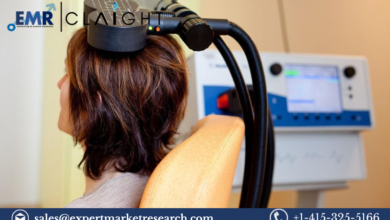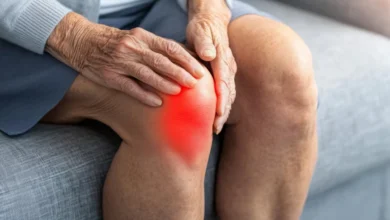What Are the Benefits of Knowing When to See a Vascular Doctor?

Vascular health plays a critical role in your overall well-being, as it affects the circulatory system responsible for delivering blood, oxygen, and nutrients throughout the body. However, vascular issues can sometimes be overlooked until they become severe. Knowing when to see a vascular doctor can save you from potential complications, improve your quality of life, and even prevent life-threatening conditions. In this article, we’ll explore the benefits of seeking vascular care at the right time and highlight key symptoms that should prompt you to schedule a visit to a vascular specialist.
What is a Vascular Doctor?
A vascular doctor, also known as a vascular surgeon or specialist, is a medical professional who specializes in diagnosing and treating conditions related to the blood vessels, including arteries, veins, and lymphatic systems. These specialists are highly trained in managing diseases such as peripheral artery disease (PAD), varicose veins, aneurysms, deep vein thrombosis (DVT), and other vascular disorders. Their expertise extends beyond surgery, as they often provide non-surgical treatments and preventive care for managing vascular health.
How Can Early Intervention Prevent Serious Complications?
One of the major benefits of knowing when to see a vascular doctor is that early intervention can prevent more serious and potentially life-threatening complications. Vascular diseases often progress slowly, and many people ignore mild symptoms until the condition becomes advanced. By visiting a vascular specialist early, you can receive proper diagnosis and treatment before your vascular health deteriorates further.
For instance, if you suffer from PAD, which causes reduced blood flow to the limbs, early treatment can prevent severe complications like gangrene, which may lead to amputation if left untreated. Similarly, recognizing symptoms of an abdominal aortic aneurysm early and seeking prompt care can prevent the aneurysm from rupturing, a condition that often proves fatal.
What Symptoms Indicate You Should See a Vascular Doctor?
There are several symptoms and conditions that should prompt you to consider consulting a vascular doctor. Below are the key signs to look out for:
1. Leg Pain or Cramping While Walking
If you experience pain, cramping, or fatigue in your legs while walking or during physical activity, you may be suffering from PAD. This condition occurs when plaque builds up in the arteries that supply blood to the legs, leading to reduced circulation. A vascular doctor can assess your symptoms and perform diagnostic tests, such as an ankle-brachial index (ABI) or ultrasound, to confirm the presence of PAD and recommend appropriate treatment.
2. Swelling in the Legs or Feet
Swelling in the legs or feet, known as edema, may be a sign of poor circulation or venous insufficiency, where the veins in the legs struggle to return blood to the heart. This can lead to varicose veins or, in more severe cases, DVT, a condition where blood clots form in the deep veins of the legs. Consulting a vascular doctor can help identify the underlying cause of the swelling and determine if immediate medical intervention is needed to prevent complications such as pulmonary embolism.
3. Non-Healing Wounds or Ulcers
Chronic wounds or ulcers on your legs or feet that do not heal despite treatment could be a sign of vascular disease. Poor circulation, often caused by PAD or venous insufficiency, can prevent oxygen and nutrients from reaching the affected area, making it difficult for wounds to heal. A vascular doctor can provide treatments to improve circulation, promote healing, and reduce the risk of infection.
4. Cold or Discolored Extremities
Cold, pale, or bluish extremities (such as fingers, toes, hands, or feet) could indicate restricted blood flow due to arterial blockages or narrowing. Conditions such as Raynaud’s disease, atherosclerosis, or even a blood clot can affect blood circulation, leading to this symptom. If you notice persistent coldness or discoloration in your extremities, it’s important to see a vascular doctor for a thorough evaluation.
5. Bulging or Painful Varicose Veins
Varicose veins are enlarged, twisted veins that can cause discomfort, aching, and heaviness in the legs. While varicose veins may appear to be a cosmetic issue, they can sometimes indicate underlying venous disease or venous insufficiency. In more severe cases, varicose veins can lead to blood clots, skin ulcers, and other complications. A vascular doctor can assess the severity of the condition and recommend treatments such as sclerotherapy, laser therapy, or vein stripping to alleviate symptoms.
6. Sudden Onset of Chest Pain or Shortness of Breath
While chest pain and shortness of breath are often associated with heart problems, they can also be symptoms of a pulmonary embolism—a blood clot that travels to the lungs from the deep veins of the legs or arms. This is a medical emergency that requires immediate attention. If you experience these symptoms, you should see a doctor or visit the emergency room right away. However, if you are at risk for DVT or have been diagnosed with a blood clot, a vascular doctor will play a crucial role in your treatment plan.
What Are the Benefits of Seeing a Vascular Doctor for Preventive Care?
Even if you don’t have noticeable symptoms, it may still be beneficial to see a vascular doctor for preventive care, especially if you have risk factors for vascular disease. This can include a family history of vascular conditions, high blood pressure, high cholesterol, diabetes, or smoking. A vascular doctor can perform screenings to detect early signs of disease and provide guidance on lifestyle changes to help you maintain good vascular health.
1. Personalized Risk Assessment
By seeing a vascular doctor early, you can receive a personalized risk assessment based on your medical history, lifestyle, and family background. This allows the doctor to identify areas of concern and recommend strategies to reduce your risk of developing vascular problems in the future.
2. Lifestyle Modifications
A vascular specialist can provide tailored advice on lifestyle changes that can improve your vascular health. This may include recommendations for diet, exercise, and quitting smoking. Making these changes early can significantly reduce your risk of developing conditions such as PAD, varicose veins, and DVT.
3. Regular Monitoring and Early Detection
For individuals with a higher risk of vascular disease, regular check-ups with a vascular doctor can help detect any developing issues early. Early detection allows for timely treatment and can prevent the progression of diseases like aneurysms or PAD. By closely monitoring your vascular health, you can avoid complications and improve your long-term outcomes.
What Should You Expect During Your Visit to a Vascular Doctor?
When you visit a vascular doctor, your appointment will typically begin with a thorough review of your medical history and symptoms. The doctor may perform a physical examination and order diagnostic tests such as ultrasounds, blood pressure measurements, or imaging studies like a CT or MRI scan. These tests help the doctor evaluate the health of your blood vessels and determine the most appropriate treatment plan for your condition.
Treatment may involve lifestyle modifications, medications to manage blood pressure or cholesterol levels, and in some cases, minimally invasive procedures or surgery to address blockages, clots, or aneurysms. Your vascular doctor will work with you to create a personalized treatment plan tailored to your specific needs.
Conclusion
Knowing when to see a vascular doctor can have significant benefits for your health. By recognizing the signs and symptoms of vascular disease early and seeking prompt medical attention, you can prevent serious complications, improve your quality of life, and take control of your vascular health. Whether you’re experiencing leg pain, swelling, or other vascular symptoms, or you’re seeking preventive care due to risk factors, consulting a vascular doctor is a proactive step towards better health.





